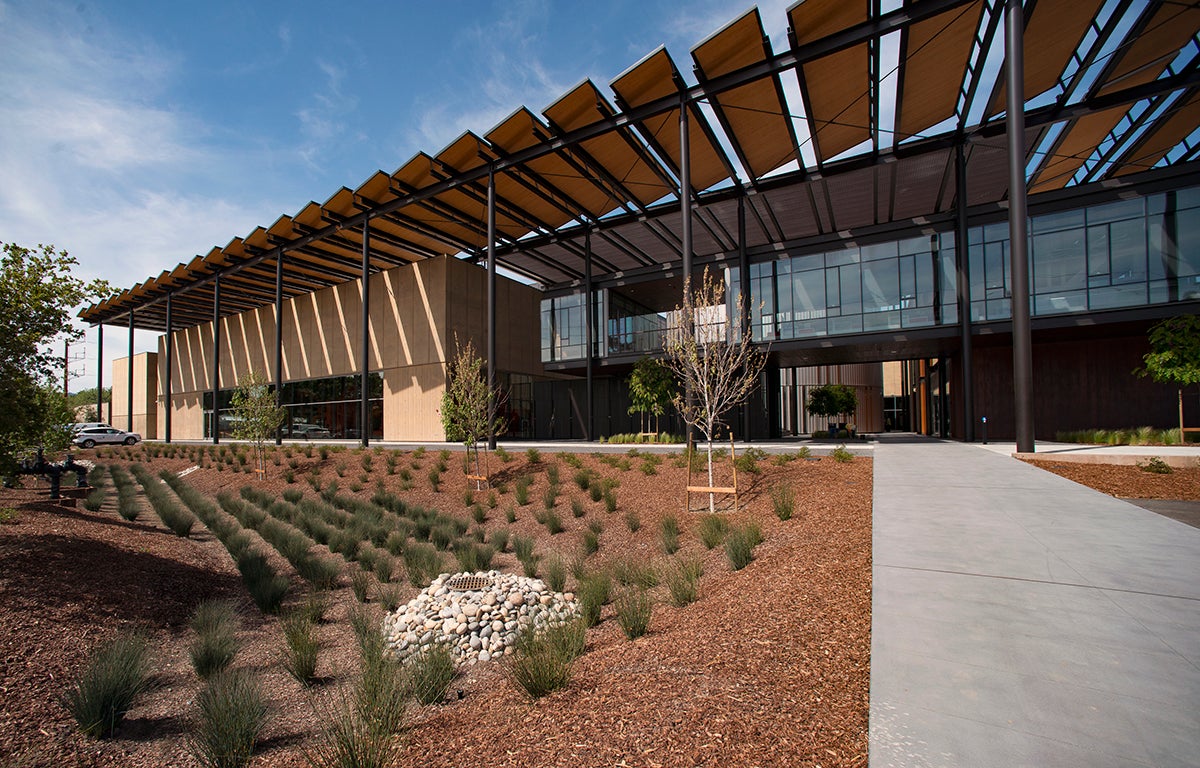In early September, temperatures on campus soared to as high as 108 degrees, causing increased demands on the university’s Central Energy Facility and its cooling system. Jack Cleary, associate vice president for Land, Buildings and Real Estate, explains what happened next and why.

Stanford’s Central Energy Facility (Image credit: L.A. Cicero)
During the recent extreme hot weather, Stanford cut back on the cooling of many campus buildings. What happened?
Simply put, we had record-breaking heat that overwhelmed our cooling system. Our campus cooling system is designed to handle occasional “heat storms” like those experienced once in a while over the past 20 years, but this recent event significantly exceeded all previous heat storms. It’s similar to flooding that occurs in cities when the intense rainfall of “100-year storms” overwhelms the storm-drainage system. Infrastructure such as energy, water and storm-drainage systems are designed to handle reasonably foreseeable occasional extreme events, but it would be impractical for them to be grossly oversized just to handle once in 20-year, 50-year or 100-year events. The recent heat storm was just such an event.
During the heatwave, we saw record-breaking temperatures on campus soar to as high as 108 degrees, which increased the demands on our chilled-water system beyond its capability. The problem wasn’t just temperatures during the day, although they were extraordinarily high. We were also affected by unusually high humidity and very warm overnight temperatures. So, we had to institute curtailment in some areas in order to continue to provide cooling to high-priority areas like patient care, research labs and data processing facilities that are dependent on consistent cooling.
Was that situation different from the July cutback?
They were similar. In both cases, we were experiencing unseasonably high temperatures. The plant is designed to handle our peak-load-plus, with a back-up chiller in reserve. This is called “N+1 redundancy,” which is standard in plant operation and allows us to take a chiller offline for routine maintenance. However, two of the seven chillers at the CEF have been down for unscheduled warranty work, which eliminated the “+1” part of the cooling system. We are still able to meet our peak demand of about 16,500 tons but if demand goes beyond that for a sustained period of time, such as we experienced during these record heat events, curtailment may be necessary. We expect to have N+1 redundancy again in mid-September, when the manufacturer repairs to the chillers are complete. I would add, however, that cooling challenges aren’t new at Stanford, just as extreme temperatures aren’t. We experienced times of curtailment before the construction of the CEF, when we relied on the Cogeneration Plant. And, CoGen was nowhere near as efficient as our systems today.
What are the different stages of chilled water containment and what do they mean?
Curtailment is a process of turning off cooling in buildings based on priority of use and/or the type of programs in each building. All buildings that receive chilled water for air conditioning are part of our curtailment program. We initiate curtailment when our projected chilled-water demand is greater than supply. Often, it is not apparent to customers that we are in curtailment mode because we are focused on low-priority buildings. There are seven stages possible during a curtailment event.
Stage 0 means that we are adjusting to reduce chilled-water use without directly impacting the functioning of campus facilities. Examples might include a temporary adjustment like setting the thermostat for 76F instead of 72F.
Stage 1 means that, in order to preserve sufficient cooling capacity for medical care, research and data processing, comfort cooling has to be reduced in many parts of the campus, primarily offices.
Stage 2 means that, in addition to reducing comfort cooling in some buildings under Stage 1, the curtailment may result in temporary disruption of teaching, research and commercial operations. Temperatures in those spaces may exceed campus guidelines of 80 to 85 degrees for a limited period of time.
Stage 3 means that temperatures in teaching, research or commercial spaces may exceed campus guidelines of 80 to 85 degrees for an extended period of time – perhaps 24 hours or more.
We hope we never get to, say, Stage 6, which would affect patient care.
What is the priority for providing air conditioning to buildings?
The highest priority is patient care at the hospitals. We then prioritize buildings that have research and/or archives that are sensitive to temperature extremes. Comfort cooling for offices is next, followed by ancillary, non-critical support buildings.
What can we expect in the future?
As sophisticated as our forecasting systems are – and they are pretty sophisticated – it’s becoming more and more challenging to rely on forecasts that use the past as a benchmark. All the studies done by our own climate researchers suggest that climate change is likely to result in more weather extremes, including higher than normal temperatures.
But what remains true is that we are keenly aware of how much unseasonably high temperatures affect people on our campus. Be assured that we do everything we can to avoid curtailment and to preserve a comfortable environment for everyone. We are very appreciative of the excellent assistance we have received from our Human Resources and University Communications colleagues in getting word out to the community about the unfolding events. A curtailment is a dynamic process and open and quick communication to our customers and community is extremely important to us. We appreciate the patience of the campus community when we do have to curtail cooling.